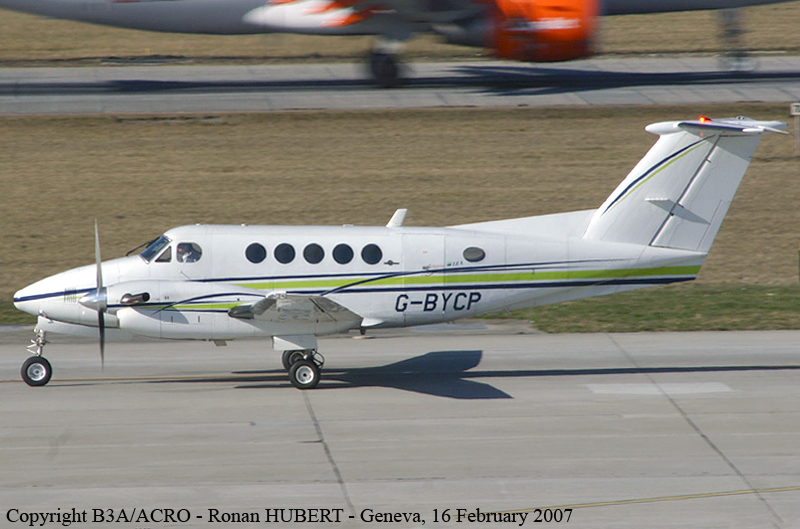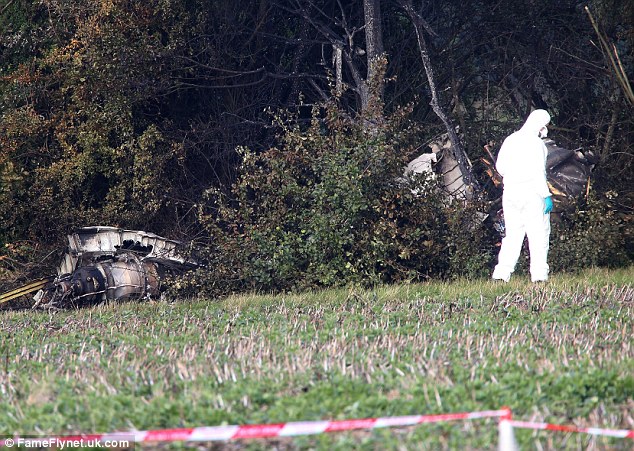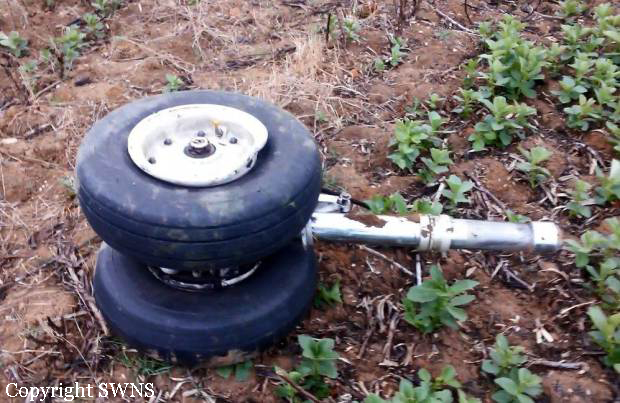Country
Crash of a Beechcraft 200 Super King Air in New Delhi: 10 killed
Date & Time:
Dec 22, 2015 at 0938 LT
Registration:
VT-BSA
Survivors:
No
Schedule:
New Delhi - Ranchi
MSN:
BB-1485
YOM:
1994
Crew on board:
2
Crew fatalities:
Pax on board:
8
Pax fatalities:
Other fatalities:
Total fatalities:
10
Captain / Total hours on type:
764.00
Copilot / Total hours on type:
691
Aircraft flight hours:
4766
Aircraft flight cycles:
2745
Circumstances:
Beechcraft Super King Air B-200 aircraft, VT-BSA belonging to BSF Air Wing was involved in an accident on 22.12.2015 while operating a flight from IGI Airport, New Delhi to Ranchi. The flight was under the command of a CPL holder with another CPL holder as Second-in-Command. There were ten persons on board including two flight crew members. As per the scheduling procedure of the Operator, the flying programme for 22.12.2015 was approved by the ADG (Logistics) on the recommendation of the DIG (Air) for VT-BSA on 21.12.2015. The programme included names of the flight crew along with the following sectors: from Delhi to Ranchi ETD 0800 ETA 1030 and from Ranchi to Delhi ETD 1300 ETA 1600. The task was as per instructions on the subject dated 23rd July 2015. As per the weight & load data sheet there were 8 passengers with 20 Kgs. of baggage in the aft cabin compartment. The actual take-off weight shown was 5668.85 Kgs as against the maximum take-off weight of 5669.9 Kgs. Fuel uplifted was 1085 Kgs. The aircraft was taken out of hangar of the Operator at 0655 hrs on 22.12.2015 and parked outside the hangar for operating the subject flight. At around 0745 hrs, the passengers reached the aircraft who were mainly technical personnel supposed to carry out scheduled maintenance of Mi-17 helicopter of the Operator at Ranchi. They were carrying their personnel baggage along with tools and equipment required for the maintenance. At around 0915 hrs the flight crew contacted ATC Delhi and requested for clearance to operate the flight to Ranchi. The aircraft was cleared to Ranchi via R460 and FL210. Runway in use was given as 28. At 0918 hrs the doors were closed and the flight crew had started carrying out the check list. After the ATC issued taxi clearance, the aircraft had stopped for some time after commencing taxiing. The pilot informed the ATC that they will take 10 minutes delay for further taxi due to some administrative reasons. The taxi clearance was accordingly cancelled. After a halt of about 6 to 7 minutes, the pilot again requested the ATC for taxi clearance and the same was approved by the ATC. Thereafter, the aircraft was given take-off clearance from runway 28. The weather at the time of take-off was: Visibility 800 meters with Winds at 100°/03 knots. Shortly after take-off and attaining a height of approximately 400 feet AGL, the aircraft progressively turned left with simultaneous loss of height. It had taken a turn of approximately 180o and impacted some trees before hitting the outside perimeter road of the airport in a left bank attitude. Thereafter, it impacted 'head on' with the outside boundary wall of the airport. After breaking the outside boundary wall, the wings impacted two trees and the aircraft hit the holding tank of the water treatment plant. The tail portion and part of the fuselage overturned and went into the water tank. There was post impact fire and the portion of the aircraft outside the water tank was destroyed by fire. All passengers and crew received fatal injuries due impact and fire. The ELT was operated at 0410 hours UTC (0940 hours IST). The fire fighting team reached the site and extinguished the fire. The bodies were then recovered from the accident site. 08 bodies were recovered from the holding tank of the water treatment plant and bodies of both pilots were recovered from the heavily burnt portion of the cockpit lying adjacent (outside) to the wall of the holding tank of the water treatment tank.
Probable cause:
The accident was caused due to engagement of the autopilot without selecting the heading mode by the flight crew just after liftoff (before attaining sufficient height) in poor foggy conditions and not taking corrective action to control the progressive increase in left bank; thereby, allowing the aircraft to traverse 180° turn causing the aircraft to lose height in a steep left bank attitude followed by impact with the terrain.
Final Report:



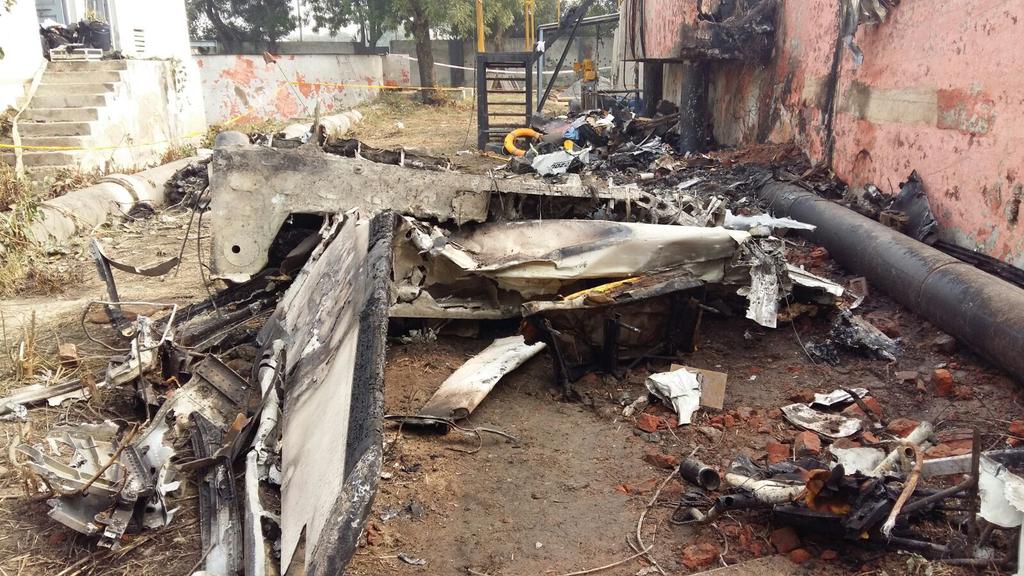

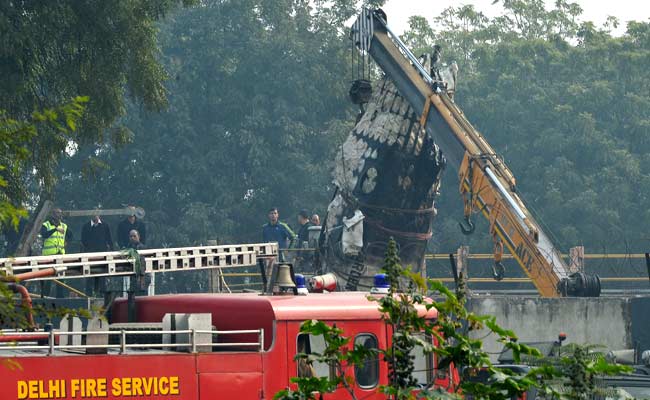
Crash of a Beechcraft B200 Super King Air in Chigwell: 2 killed
Date & Time:
Oct 3, 2015 at 1020 LT
Registration:
G-BYCP
Survivors:
No
Schedule:
Stapleford - Brize Norton
MSN:
BB-966
YOM:
1982
Crew on board:
1
Crew fatalities:
Pax on board:
1
Pax fatalities:
Other fatalities:
Total fatalities:
2
Captain / Total hours on type:
162.00
Aircraft flight hours:
14493
Aircraft flight cycles:
12222
Circumstances:
G-BYCP was planned to operate a non-commercial flight from Stapleford Aerodrome to RAF Brize Norton with two company employees on board (including the pilot) to pick up two passengers for onward travel. The pilot (the aircraft commander) held a Commercial Pilot’s Licence (CPL) and occupied the left seat and another pilot, who held an Airline Transport Pilot’s Licence (ATPL), occupied the right. The second occupant worked for the operator of G-BYCP but his licence was valid on Bombardier Challenger 300 and Embraer ERJ 135/145 aircraft and not on the King Air. The pilot reported for work at approximately 0715 hrs for a planned departure at 0815 hrs but he delayed the flight because of poor meteorological visibility. The general weather conditions were fog and low cloud with a calm wind. At approximately 0850 hrs the visibility was judged to be approximately 600 m, based on the known distance from the operations room to a feature on the aerodrome. At approximately 0915 hrs, trees were visible just beyond the end of Runway 22L, indicating that visibility was at least 1,000 m and the pilot decided that conditions were suitable for departure. At 0908 hrs, the pilot called the en-route Air Navigation Service Provider (ANSP) on his mobile phone to ask for a departure clearance. He was instructed to remain clear of controlled airspace when airborne and call London Tactical Control Northeast (TCNE) on 118.825 MHz. The planned departure was to turn right after takeoff and intercept the 128° radial from Brookman’s Park VOR (BPK) heading towards the beacon, and climb to a maximum altitude of 2,400 ft amsl to remain below the London TMA which has a lower limit of 2,500 ft amsl. The aircraft took off at 0921 hrs and was observed climbing in a wings level attitude until it faded from view shortly after takeoff. After takeoff, the aircraft climbed on a track of approximately 205°M and, when passing approximately 750 ft amsl (565 ft aal), began to turn right. The aircraft continued to climb in the turn until it reached 875 ft amsl (690 ft aal) when it began to descend. The descent continued until the aircraft struck some trees at the edge of a field approximately 1.8 nm southwest of the aerodrome. The pilot and passenger were both fatally injured in the accident, which was not survivable. A secondary radar return, thought to be G-BYCP, was observed briefly near Stapleford Aerodrome by London ATC but no radio transmission was received from the aircraft. A witness was walking approximately 30 m north-east of where the aircraft struck the trees. She suddenly heard the aircraft, turned towards the sound and saw the aircraft in a nose‑down attitude fly into the trees. Although she saw the aircraft only briefly, she saw clearly that the right wing was slightly low, and that the aircraft appeared to be intact and was not on fire. She also stated that the aircraft was “not falling” but flew “full pelt” into the ground.
Probable cause:
Examination of the powerplants showed that they were probably producing medium to high power at impact. There was contradictory evidence as to whether or not the left inboard flap was fully extended at impact but it was concluded that the aircraft would have been controllable even if there had been a flap asymmetry. The possibility of a preaccident control restriction could not be discounted, although the late change of aircraft attitude showed that, had there been a restriction, it cleared itself. The evidence available suggested a loss of aircraft control while in IMC followed by an unsuccessful attempt to recover the aircraft to safe flight. It is possible that the pilot lost control through a lack of skill but this seemed highly unlikely given that he was properly licensed and had just completed an extensive period of supervised training. Incapacitation of the pilot, followed by an attempted recovery by the additional crew member, was a possibility consistent with the evidence and supported by the post-mortem report. Without direct evidence from within the cockpit, it could not be stated unequivocally that the pilot became incapacitated. Likewise, loss of control due to a lack of skill, control restriction or distraction due to flap asymmetry could not be excluded entirely. On the balance of probabilities, however, it was likely that the pilot lost control of the aircraft due to medical incapacitation and the additional crew member was unable to recover the aircraft in the height available.
Final Report:
